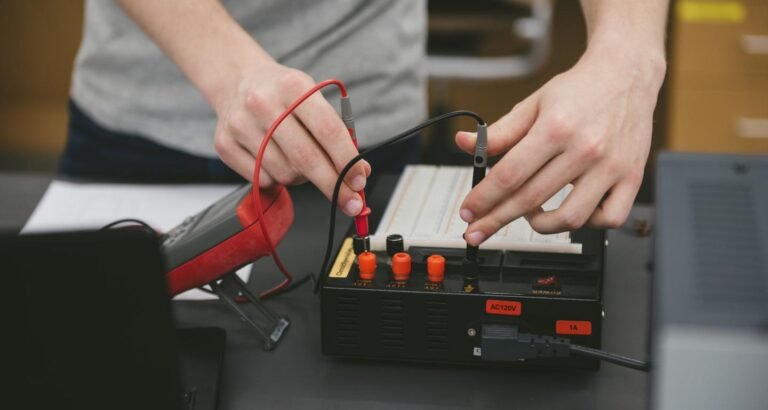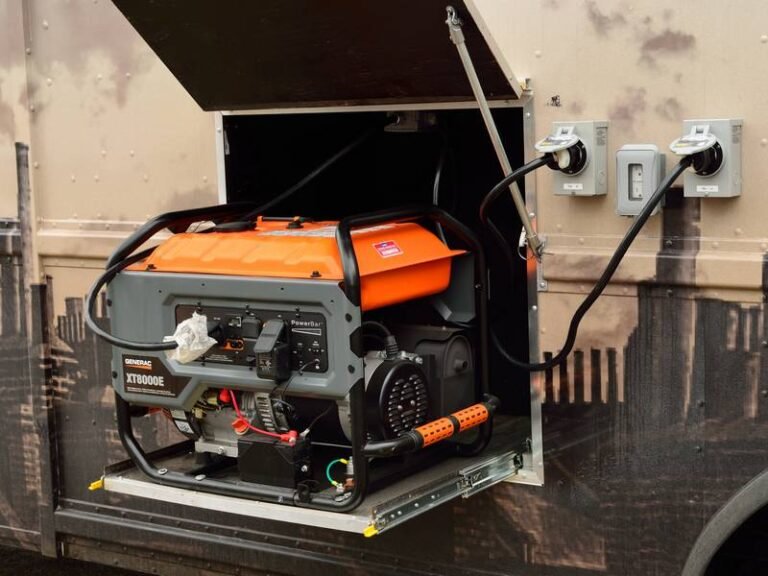How to Choose the Right Standby Generator
It’s critical to understand the following details on How to Choose the Right Standby Generator for your house:
How Much Power You Require
Knowing how much power your home needs is crucial when choosing a generator. You must evaluate the wattage of each appliance and gadget you plan to use the generator to power in order to ascertain this.
The approximate running power ratings for a variety of household appliances and gadgets are listed below:
- Freezer/Refrigerator: 600–800 W
- 2500 watts for a single element electric range
- 1,100 to 1,700 watts for a toaster
- Microwave power range: 800–1,200 W
- Espresso machine: 400–800 watts
- 5,000 watts for an electric oven
- TV: between 100 and 350 watts
- Watts for a personal computer: 300–2000
- Watts for a hair dryer: 1200–1500
- 700 to 1400 watts of vacuum
- Heater for space: 1,000–1,500 watts
- Light Fixture: 150 Watts
- Watts per electric furnace: 5,000–25,000
- Radiant heater: 1,200–1,500 watts
- Air conditioning central: between 2,000 and 4,000 watts
- Water Heater Electric: 3,500–4,500 Watts
- Pump for water: 1,000–2,000 watts
- Watts per window air conditioner: 600–1,500
- Lighting Outdoors: 500–1,000 watts
- Watts of the sump pump: 1,200–1,800
How to Select the Appropriate Backup Generator
The Variations in Running and Starting Wattage
Recognizing Crucial Appliances
Finding the Wattage Needed
Next, ascertain each item on your list’s wattage rating. The majority of appliances come with a label that shows how many watts they use. If the appliance’s wattage isn’t displayed on it, look up the specs online or in the user manual.
After obtaining the wattage ratings for every appliance, sum them together to determine the overall wattage needed for your generator. You may determine the minimum wattage capacity your generator needs to suit your needs by adding up these totals.
Taking Startup Wattage into Account
Remember that certain appliances may demand more wattage—also referred to as “startup” or “surge” wattage—when they first turn on. For instance, the motors of air conditioners and refrigerators frequently need more power to start. When determining the capacity of your generator, make sure to take these increased startup wattages into consideration.
Organizing for Upcoming Requirements
Making plans for upcoming requirements and prospective expansions is also a smart notion. If you want to be sure you have adequate power for unforeseen circumstances or if you plan on adding more appliances or devices in the future, you might want to choose a generator with a higher wattage capacity than your present calculations indicate.
Investigating Generator Types
After figuring out how much power you need, you can start looking at different kinds and sizes of generators to see which one will work best in your house. Generators are available in many sizes, from compact portable units to substantial backup systems.
Standby vs. Portable Generators
In general, portable generators are more cost-effective and adaptable, enabling you to relocate them as required. In contrast to backup generators, they might, however, have less wattage capacities and shorter runtimes.
Permanently placed outside your house, standby generators start up on their own when the electricity goes off. They are perfect for larger households or constant power requirements because they frequently offer longer runtimes and higher wattage capacities.
Selecting the Appropriate Generator
When selecting a generator, take into account elements like runtime, noise level, safety features, and fuel type (diesel, propane, or gasoline). Additionally, to guarantee correct installation and adherence to regional building laws and regulations, seek the advice of a licensed electrician.
You and your family can have peace of mind and dependable backup power during emergencies by carefully evaluating your wattage requirements and selecting the best generator for your house.
Recognizing Running and Starting Wattage
Understanding the difference between running and beginning wattage is essential before you can determine your exact wattage needs for a generator. The first electrical surge needed to power a gadget is represented by starting wattage, also known as surge watts. To put it another way, it’s the electricity required to turn the item on. Most gadgets have a starting wattage that is roughly three times higher than their running wattage.
Conversely, running wattage is sometimes called continuous wattage. This is the constant current flow needed to keep the gadget running once it has been turned on. A gadget needs a steady power source at a lower wattage than its initial wattage once it has started and is operating smoothly.
It’s important to know these differences when choosing a generator since they enable you to determine the overall power needs of the appliances and gadgets you plan to run. Running wattage is the amount of electricity consumed continuously by a device while it is operating, whereas starting wattage is the amount of power required for a device to start.
Standby Generators: Ensuring Precise Estimation of Power Need
You may more accurately estimate the total power demand of your standby generator by finding the starting and running watts for each appliance or gadget. This accuracy guarantees that the standby generator you choose has the capacity to supply continuous power for seamless operation at starting and to fulfill the peak needs of your electrical appliances.
Setting Important Appliances First During Power Outages
Knowing the difference between operating and beginning wattage enables you to set priorities for your most important appliances and gadgets in case of power interruptions. You can improve safety and convenience during emergencies by ensuring the continuous operation of essential systems like heating systems, medical devices, and freezers by assigning sufficient wattage capacity to crucial equipment.







